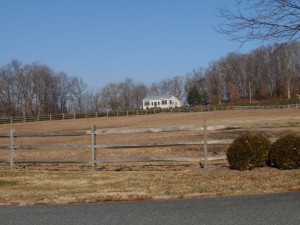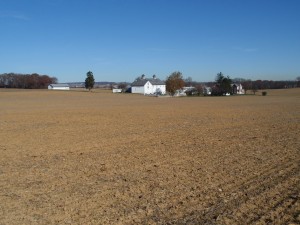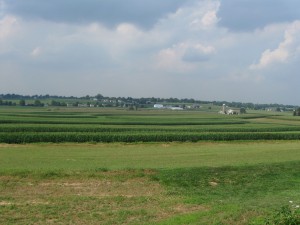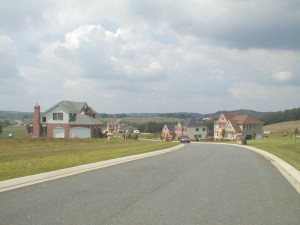Big changes proposed for Pa. program
BY DEBORAH BOWERS
HARRISBURG, PA – Legislation that would amend numerous aspects of the Pennsylvania farmland preservation program was introduced as Senate Bill 1437 on March 6. The bill was introduced by Sen. Mike Brubaker, who represents Lancaster County and chairs the Senate Agriculture and Rural Affairs Committee, where the bill is assigned.
The bill results from a comprehensive review of the state farmland program aimed at relieving county-level administration problems and changes that have occurred over the last decade to the landscape of farmland preservation. The proposed changes account for increased interest among farmers in alternative energy production and shale gas extraction, now underway on many preserved farms. The bill also responds to a number of needs of a maturing program, such as relieving monitoring requirements and adjusting how state funds are distributed to counties. This aspect will likely be among the more controversial provisions in the bill.
SB 1437 would also determine what level of importance is assigned to certain attributes of a property by prescribing minimum weighted values in local ranking formulas; would require that townships provide to County Ag Preserve Boards information on enrollment of Agricultural Security Areas (ASAs); would require that ASAs remain intact until a required review, which is to occur every seven years, is completed; would allow the Secretary of Agriculture to designate a representative to the state board rather than personally participate, an allowance in the Maryland program that has been consistently used.
Further, the bill would allow applicants to relinquish the one principal residence allowed in the program, and allow a county program to prohibit it; would allow the development and operation of an alternative energy system if a majority of the energy generated is used on site and if counties allow it; would limit to two percent or five acres whichever is less, the amount of land used for mineral extraction including natural gas unless increased by a county board; would reduce the required frequency of on-farm inspections to every other year, but still require annual monitoring by “other types of monitoring methods” (i.e. aerial photographs, on-line deed searches); would permit counties to establish reasonable non-refundable fees for certain activities, including an easement application, an appraisal, a survey, etc., a move urged by the Pa. Farmland Preservation Association; would allow counties to use the lesser of 10% or $20,000 of their state allocation for the enforcement of easements; would prohibit the transfer of less than the entirety of a preserved farm without approval by a county board (currently, farms preserved that are described in more than one tax parcel, deed, tract, etc., may be conveyed as those separately described pieces without approval by a county board, regardless of a county board subdivision limitations); would allow the amendment of an easement to add contiguous land that meets all minimum criteria except for parcel size (for example, would allow a county to add five acres to an easement).
The legislation favors a county, such as Lancaster County, that provides grants to land trusts, by allowing such grants to count as part of a county’s matching funds to the state. Lancaster has consistently provided sizeable grants to the Lancaster Farmland Trust.
The most dramatic change under the bill would be how money is allocated across the state. An examination of the legislation’s effects on fund distribution conducted by the Bureau of Farmland Preservation shows the alteration is literally all over the map – from some counties receiving in excess of 400 percent markup in monies received, and many others receiving a cut of 50 percent or more, those including Lehigh, Greene, Luzerne and Monroe Counties. Some of the state’s top performing farmland preservation counties would see increases in the range of 14 and 48 percent. Lancaster, which is the state’s as well as the nation’s leader in preserved acres, would see an increase of 48 percent, and Chester would see a 14 percent increase. Adams County would get a 42 percent increase. But Berks, which ranks 3rd in the nation for preserved acres, and in the state, second only to Lancaster in number of preserved farms, would see a three percent decrease in funds. York County, where local funding has plunged in recent years, would get a hit from the state level as well, with a whopping 20 percent decrease under the bill’s formula. Juniata County, which is among the state’s lowest ranking for number of acres and farms preserved, would receive the largest increase, at 529 percent, of all counties. Snyder County, which logged zero in matching funds to the program last round, would receive a 488 percent increase. Many other counties whose progress has been slow would receive increases ranging from 48 to more than 400 percent.
The Pa. Senate will reconvene April 30.
Maryland legislative briefs
Maryland’s legislative session brought about dramatic change for land use planning as well as more adjustments to the Maryland farmland preservation program, an annual rite of spring in the state.
SB 236 is Maryland’s new statewide planning law that turned local planning and zoning on its head for much of the state, and will take effect July 1. The new law will change how residential development density is determined throughout the state and accomplished statewide planning and zoning protocol by addressing the matter in terms of private septic systems and their effect on water pollution. Timing was a large part of the legislation, coming through federal mandates to clean up the Chesapeake Bay. The enrolled bill itself, full of rejected language and amendments is 53 pages and the Fiscal and Policy Note, which does a fair job of interpreting the new law in a readable narrative, is 23 pages. It is readily evident in the Fiscal and Policy Note that the short- and long-term effects of the bill as passed are unclear, but its effects on counties will be determined by how counties respond to the new state guidelines, many of which are mandatory. A more thorough review from FPR will be forthcoming.
HB 423 authorizes St. Mary’s County Agricultural Advisory Board to opt out of the state requirements for board membership from the current requirement that at least three of five members be owner-operators and earn at least 50 percent of their income from farming. The St. Mary’s County board now has the go-ahead to require those minimum of three members only to be activity engaged in farming for profit. Program administrator Donna Sasscer related at a recent meeting of program administrators in Annapolis that her office had been having difficulty finding qualified owner-operator candidates for the board. In other legislation, St. Mary’s, as well as Dorchester County, were authorized under HB 171 to join six other counties in allowing wineries to serve wine at farmers markets under special event permits. Another bill authorized Charles County to do the same.
SB 294, the Family Farm Preservation Act of 2012, exempts from Maryland’s inheritance or estate tax up to$5 million of qualified agricultural property. The new law, which takes effect July 1, applies to deaths since Dec. 31, 2011. Properties must pass to an individual who agrees, under IRC Sec. to keep the land in agriculture for10 years. For more details see the bill’s fiscal and policy note.
HB 680 will create a task force to determine how to incorporate agricultural topics into school curricula.
SB 112 amends the legislation that governs how the MALPF program will handle an easement termination request. Property owners requesting termination will be required to provide two appraisals, instead of one. The appraisals will be reviewed by the Dept. of Legislative Services to determine final value. Appraisals would be conducted after termination was approved.
SB 129 further amends the MALPF program to operation without the use of Agricultural Districts and redefines certain requirements for easement applications. Creation of Ag Districts was discontinued in 2007, but counties are authorized to enforce District agreements or to modify or terminate them. Ag Districts are scheduled in the bill to finally terminate June 30 unless counties are willing to accept assignment of them. For more than 30 years Agricultural Districts were the prerequisite to selling an easement to the MALPF program. Districts remaining are those that never sold an easement.
 SB 148 toughens MALPF’s child and owner’s lot policy and enforcement. Child and owner’s lots have burdened program administration since its inception and this bill attempts to aid enforcement to the extent possible under law. Child lots under the new law may become void if MALPF does not receive a nontransferable building permit within three years after the preliminary release is recorded; if the lot is not used by the person it is assigned to within five years, MALPF may require the lot be reconveyed to the original farm and restricted again under the easement. Further, the Foundation “may require evidence it deems sufficient” to determine the identity of the current occupant up to the five-year occupancy requirement for a child’s or owner’s lot. The bill was signed by the governor April 10.
SB 148 toughens MALPF’s child and owner’s lot policy and enforcement. Child and owner’s lots have burdened program administration since its inception and this bill attempts to aid enforcement to the extent possible under law. Child lots under the new law may become void if MALPF does not receive a nontransferable building permit within three years after the preliminary release is recorded; if the lot is not used by the person it is assigned to within five years, MALPF may require the lot be reconveyed to the original farm and restricted again under the easement. Further, the Foundation “may require evidence it deems sufficient” to determine the identity of the current occupant up to the five-year occupancy requirement for a child’s or owner’s lot. The bill was signed by the governor April 10.


